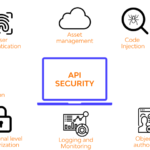When considering “business continuity,” don’t forget to consider your networks and data in addition to your staff, clients, and assets. Your firm depends on intellectual property, financial data, and information on suppliers, customers, and workers. As you create your overall business continuity strategy, make sure to include a section dedicated to your networks and data.
A Four-Step Procedure to Plan Your Business Continuity
1. Threat Evaluation
Conduct a thorough assessment of potential threats, is a crucial step in identifying the type and likelihood of various events. According to Verizon’s annual Data Breach Investigations Report (DBIR), significant vulnerabilities include malware, phishing, and credential misuse. Beyond these, there are additional risks associated with unintentional actions, such as an employee mistakenly sending the wrong file via email, misplacing a laptop or electronic device containing sensitive information, or other inadvertent incidents. Considering these diverse threats, incorporating a robust data backup and recovery service becomes essential to fortify your organization against unforeseen events.
Techniques to lessen the impact of losses brought on by these inadvertent or deliberate actions or technical malfunctions should be part of your plan. In addition, natural disasters like hurricanes, earthquakes, and tornadoes should be considered. Failures of the electricity grid and power outages should also be taken into account.
2. Critical Impact Analysis for Business
Analyze the impact on the business. It will assist you in determining which business functions are most important to maintaining your operations and ranking them. This study might help guarantee a speedy recovery of your organization. For the following reasons,
- You can determine which vital data needs to be kept up to date to maintain appropriate operation levels with the use of your data inventory and classification procedure.
- A network inventory can assist in determining the essential hardware, software, and firmware required to carry on offering products and/or services.
- Prioritizing the issues that must be fixed first might be aided by figuring out how long an interruption can go before having a major negative effect on your company.
3. Strategies for Prevention and Mitigation
Provide a thorough backup plan for your hardware, software, firmware, and important data. Generally speaking, other non-critical tasks can be recovered and brought back to regular operations gradually without interfering with your business.
Make sure your plan outlines who is in charge of backing up files, where they are kept, and who may access them. Every backup needs to be kept in a location that is far away from any potential threats. Access to the place should be restricted and secure. You can store your backups with other parties as well. Make sure to include the necessary level of security in your contract with the third party, along with the deadline for their delivery of your backups. It is imperative that you thoroughly record these protocols and maintain them current.
Important backup factors to think about are:
- Every week at the very least, electronic data should be automatically backed up. For systems that store important data, think about performing more frequent data backups.
- Software and apps that are proprietary or internally developed should be backed up off-site for easy reloading onto new hardware.
- You should keep a secure, authoritative copy of the web material for your company somewhere.
4. Practice, Testing, and Ongoing Improvement
Test your plan often so you can assess its efficacy. The backup and restoration procedures should be understood by important staff members and outside parties. Sample testing of the system backups should be performed regularly to ensure that the data, programs, and operating system can all be recovered.
Conclusion
Weaving data management and protection seamlessly into your business continuity strategy is not just a prudent measure; it’s a foundational pillar for the resilience and sustainability of your organization. By prioritizing these aspects, you not only fortify your business against unforeseen events but also ensure that you can weather any storm and emerge stronger on the other side.





